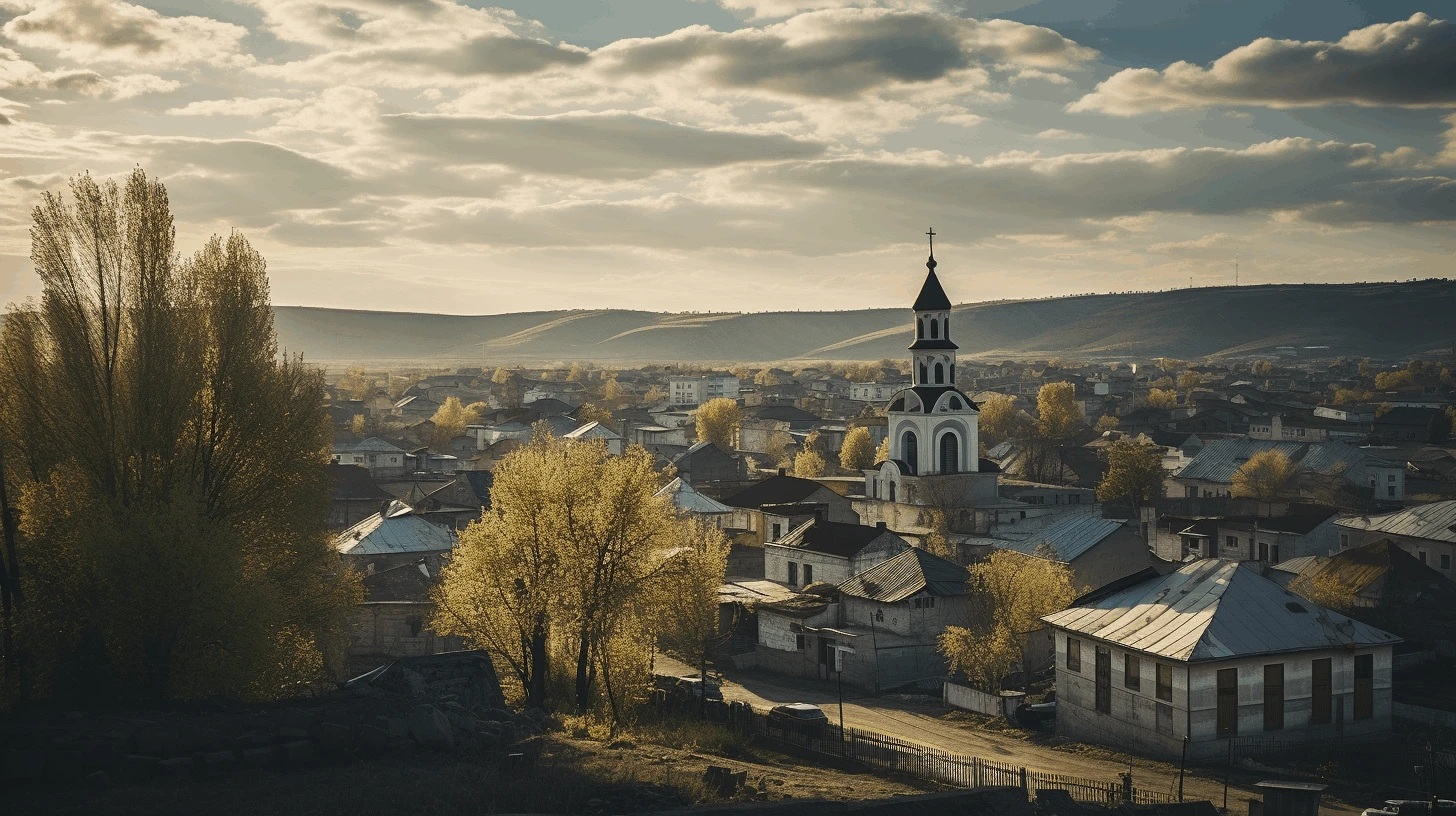
Prayer times in Moldova
11:25 PM • +02:00 GMT
Payer Times for Cities in Moldova
| City | Fajr | Sunrise | Dhuhr | Asr | Maghrib | Isha |
|---|---|---|---|---|---|---|
| Bender | 05:57 | 07:47 | 12:06 | 14:07 | 16:25 | 18:09 |
| Bălți | 06:05 | 07:57 | 12:12 | 14:10 | 16:28 | 18:14 |
| Cahul | 06:01 | 07:49 | 12:11 | 14:16 | 16:34 | 18:16 |
| Chișinău | 06:00 | 07:50 | 12:09 | 14:09 | 16:27 | 18:12 |
| Dubăsari | 05:59 | 07:50 | 12:07 | 14:07 | 16:25 | 18:10 |
| Orhei | 06:00 | 07:52 | 12:09 | 14:08 | 16:26 | 18:11 |
| Rîbnița | 06:00 | 07:53 | 12:08 | 14:06 | 16:23 | 18:10 |
| Soroca | 06:04 | 07:57 | 12:11 | 14:07 | 16:25 | 18:12 |
| Tiraspol | 05:56 | 07:47 | 12:05 | 14:07 | 16:25 | 18:09 |
| Ungheni | 06:04 | 07:55 | 12:13 | 14:13 | 16:30 | 18:16 |
Prayer Times of Others Cities in Moldova
About Moldova
Located between Romania and Ukraine in Eastern Europe, Moldova, a small landlocked country, is often overlooked by many travelers. This hidden gem, however, has a lot to offer. Famous for its wine, it boasts some of the most extensive wine cellars in the world. The country's picturesque landscapes are marked by rolling steppe gradually sloping towards the Black Sea. The capital, Chișinău, is known for its green spaces and Soviet-era architecture, including the impressive Transnistria Parliament building and the Triumphal Arch. Moldova's rich history reflects in its many monasteries, such as the Căpriana Monastery, one of the oldest in Moldova. The country’s cultural diversity is evident in its music and dance, cuisines, and traditions. Being home to numerous ethnic groups, including Moldovans, Ukrainians, Russians, Gagauz, and Bulgarians, the nation’s cultural heritage is multilayered and rich. Moldova’s cuisines are influenced by its neighbors and consist of a variety of meat and vegetable dishes. The plăcintă, a traditional pastry resembling a thin, small round or square-shaped cake, is a must-try delicacy. Despite being one of Europe’s poorest nations, Moldovans are known for their hospitality and warmth. The country, though small in size, has a significant impact on the world’s wine industry, with its wine-making history dating back to 3000 BC.